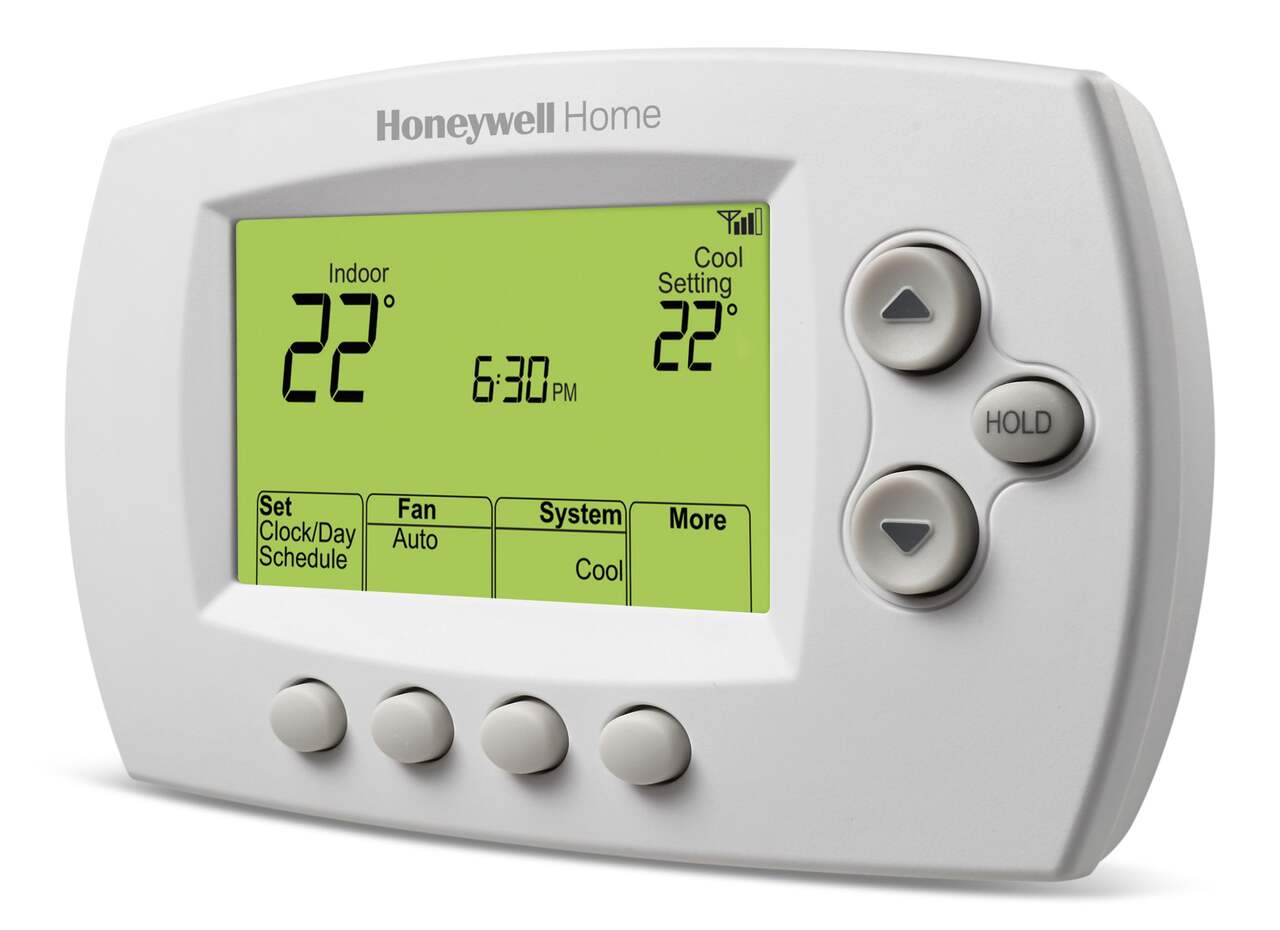Check Best Thermostat Pricing in Amazon
** As an Amazon Associate, I earn from qualifying purchases.
Yes, Honeywell thermostats can work without batteries if they are hardwired to the electrical system of the building. Hardwiring provides a constant source of power to the thermostat, eliminating the need for batteries. However, it’s important to note that some Honeywell models may require batteries for backup power in case of a power outage.
The Functionality of Honeywell Thermostats Without Batteries
Honeywell thermostats are known for their reliable performance and advanced features. While some thermostats rely on batteries for power backup during electrical outages, Honeywell thermostats have the capability to function without batteries, provided they are connected to an AC power source using specific wiring.
The primary power source for Honeywell thermostats is the 24VAC system, which supplies power to the thermostat. The two essential wires for proper functioning are the R terminal, which represents the 24VAC hot wire, and the C terminal, which stands for the 24VAC common wire. When these wires are properly connected, the Honeywell thermostat can draw continuous power from the home’s electrical system, eliminating the need for batteries.
It’s important to note that while Honeywell thermostats without batteries can maintain the desired temperature and basic functions during a power outage, they may lose any customized settings or programmed schedules. However, the thermostat will resume normal operation once the power is restored, ensuring a comfortable home environment for homeowners.
Advantages and Disadvantages of Honeywell Thermostats Without Batteries
Opting for a Honeywell thermostat that operates without batteries offers several advantages for homeowners. One significant advantage is the elimination of the need for frequent battery replacements, resulting in cost savings and increased convenience. Additionally, thermostats without batteries are more eco-friendly, reducing the environmental impact associated with battery disposal.
However, there are a few disadvantages to consider when using a Honeywell thermostat without batteries. During a power outage, the thermostat may lose any customized settings or programmed schedules, requiring homeowners to reconfigure these settings once the power is restored. This inconvenience can be mitigated by using alternative power sources or installing a battery backup system.
Alternative Power Solutions for Honeywell Thermostats
While Honeywell thermostats can function without batteries, homeowners may explore alternative power solutions to enhance their thermostat’s performance and reliability. Here are a few options to consider:
Check Best Thermostat Pricing in Amazon
** As an Amazon Associate, I earn from qualifying purchases.
- Wired Connections: Honeywell thermostats can be connected directly to the home’s electrical system using the 24VAC wires, ensuring a constant power supply without relying on batteries.
- Solar Power: Installing solar panels can provide a sustainable and renewable power source for the thermostat, reducing dependence on traditional electrical power.
- Power Adapters: Some Honeywell thermostats offer the option to connect to a power adapter, which converts the electrical power from an outlet into the necessary voltage to operate the thermostat.
- Energy Harvesting: Energy harvesting technology utilizes the ambient energy in the environment, such as light or temperature differentials, to power devices like thermostats.
- Hybrid Systems: Hybrid systems combine multiple power sources, such as batteries, solar power, and wired connections, to ensure uninterrupted operation of the thermostat.
Exploring these alternative power solutions can provide homeowners with a more sustainable and reliable option for powering their Honeywell thermostats.
Maintaining Battery Life in Honeywell Thermostats
Although Honeywell thermostats without batteries rely on the 24VAC power source, some models may still require batteries for specific functions or power backup. To ensure optimal battery life and performance, homeowners can follow these tips:
- Choose High-Quality Batteries: When batteries are necessary, opt for high-quality alkaline or lithium batteries to ensure consistent power supply and longer battery life.
- Avoid Frequent Adjustments: Constantly adjusting the thermostat’s settings can drain the battery faster. Minimize unnecessary changes and set the thermostat at a stable temperature to conserve battery power.
- Protect from Extreme Temperatures: Extreme temperatures can impact battery performance. Keep the thermostat away from direct sunlight or areas with high moisture to prolong battery life.
- Follow Manufacturer Guidelines: Adhere to the manufacturer’s recommendations regarding battery replacement intervals and procedures to ensure optimal performance.
By following these tips, homeowners can extend the battery life of their Honeywell thermostats and minimize the need for frequent battery replacements.
Battery Backup Systems for Honeywell Thermostats
For homeowners who desire uninterrupted operation of their Honeywell thermostats during power outages, installing a battery backup system is a viable solution. Battery backup systems, such as uninterruptible power supplies (UPS), can provide temporary power to the thermostat, ensuring that it continues to function even when the main power source is disrupted. This backup power allows the thermostat to maintain customized settings and programmed schedules, providing homeowners with peace of mind during electrical outages.
When selecting a battery backup system, it’s essential to consider the power requirements of the Honeywell thermostat and choose a UPS with sufficient capacity to support the thermostat’s power needs. Consulting with a professional electrician or HVAC technician can help homeowners determine the most suitable battery backup system for their specific thermostat model.
Conclusion
In conclusion, Honeywell thermostats can indeed function without batteries when connected to an AC power source using specific wiring. While these thermostats can maintain the desired temperature during power outages, they may lose any customized settings or programmed schedules. However, alternative power solutions, such as wired connections, solar power, power adapters, energy harvesting, or hybrid.
Check Best Thermostat Pricing in Amazon
** As an Amazon Associate, I earn from qualifying purchases.


